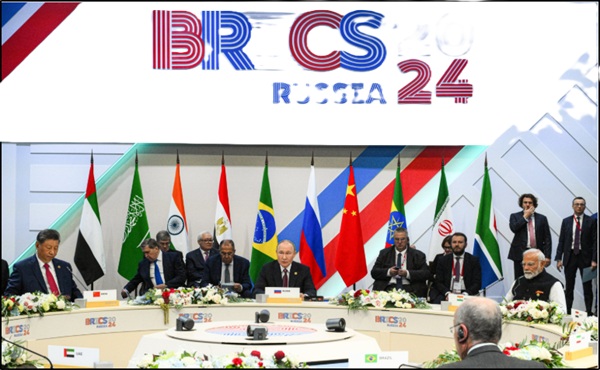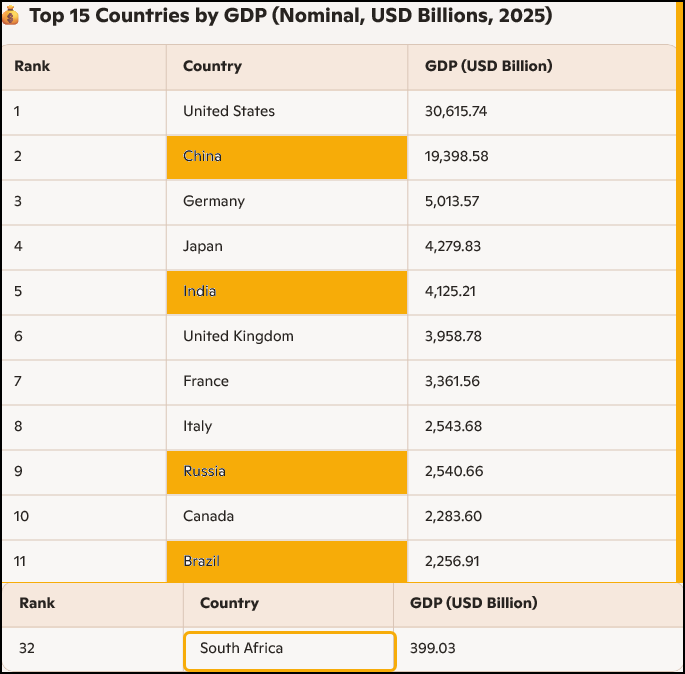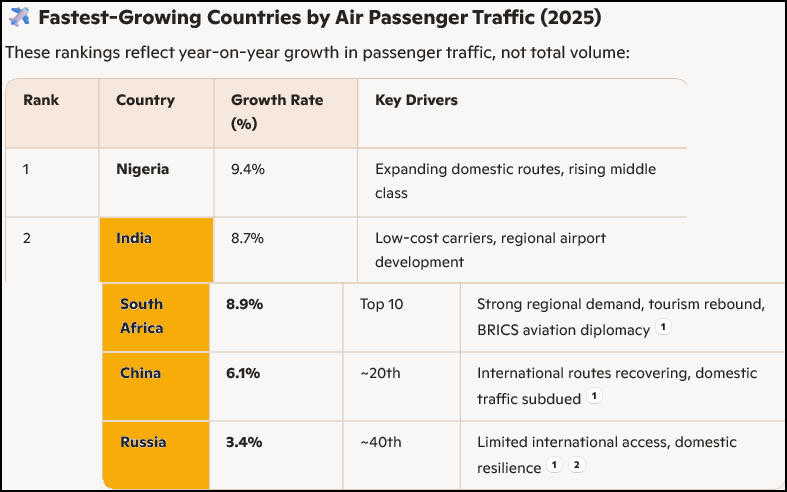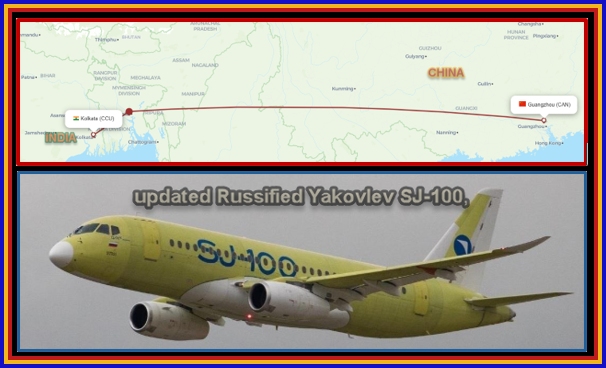BEWARE OF THE BRICS in AVIATION
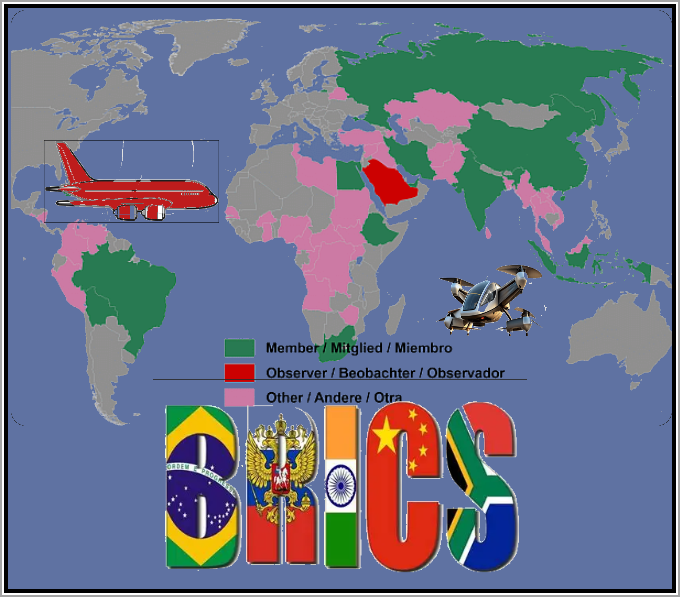
The Air Curtain published a warning about the impact that recent #47’s negotiations might drive India and Brazil closer to China and Russia. Not surprisingly Jon Ostrower, an aerospace trade journalist, highlights the aviation consequences.
Politico was even more pointed in its comments
“The unraveling of what had appeared to be a promising trade dynamic between the U.S. and one of the world’s fastest-rising economies illustrates the precarious nature of crafting an economic partnership with a mercurial Trump administration that has freely used high tariff rates to try to bend the world to its will…
The clash also underscores the challenging position the U.S. is in as its hefty tariffs PUSH COUNTRIES LIKE INDIA AND BRAZIL CLOSER TO RUSSIA AND CHINA. Brazilian President Luiz Inácio Lula da Silva spoke with Modi on Thursday as the Brazilian leader calls for a joint response to Trump’s tariffs from countries that are part of the so-called BRICS group of emerging economies…”
For those who may not have heard of BRICS, here the group’s summary its existence and purpose—
“The BRICS Economic Partnership Strategy 2025 establishes a framework for economic cooperation among BRICS nations, aiming to address global challenges, strengthen economic growth, and promote sustainable development. The strategy prioritizes TRADE, INVESTMENT, finance, digital transformation, and sustainable development, focusing on economic resilience, technological innovation, and social inclusivity.
Key Focus Areas:
-
-
-
- Trade, Investment, and Finance
-
-
-
-
-
- Trade: Strengthening intra-BRICS trade, REDUCING TRADE BARRIERS, and supporting WTO reforms to enhance transparency and fairness in global trade.
- Investment: Promoting cross-border investments, industrial development, and improving business environments.
- MSMEs: Facilitating the growth of micro, small, and medium enterprises (MSMEs) through digital tools, e-commerce, and access to financing.
- Finance: Enhancing financial cooperation, increasing the use of national currencies in transactions, supporting IMF reforms, and expanding the role of the New Development Bank.
-
-
-
-
-
- Digital Economy
-
-
-
-
-
- Digital Transformation: Encouraging the adoption of digital technologies, bridging the digital divide, and improving digital governance.
- Industry, Innovation, and Technology: Enhancing COOPERATION IN ADVANCED MANUFACTURING, SCIENTIFIC RESEARCH, AND NEW TECHNOLOGIES TO ACCELERATE INDUSTRIAL TRANSFORMATION.
-
-
III. Sustainable Development
-
-
-
- Climate Change: Implementing the Paris Agreement, promoting low-carbon technologies, and advancing climate finance mechanisms. [hard to believe given the green record of all 5 nation.]
- Energy: Strengthening energy security, increasing renewable energy adoption, and collaborating on clean energy technology.
- Infrastructure Development: Enhancing transport and digital infrastructure, promoting smart cities, and improving logistics systems.
- Human Resources Development: Addressing poverty, improving healthcare, supporting universal education, and fostering labor market reforms.
- Food Security:E nsuring stable agricultural production, reducing food waste, and improving nutrition for vulnerable populations.
-
-
Implementation Approach
The strategy will be executed through:
-
-
-
- Data sharing, research, and policy alignment.
- Business collaboration via the BRICS Business Council and the Interbank Cooperation Mechanism.
- Aligning BRICS goals with UN Sustainable Development Goals (SDGs).
-
-
BRICS aims to enhance economic resilience, inclusivity, and global influence by fostering collaboration in trade, technology, and sustainable development. The strategy seeks to solidify BRICS’ role in shaping a multipolar world economy while strengthening internal cooperation.”
BRICS’ economic clout is substantial and growing as these AI charts show—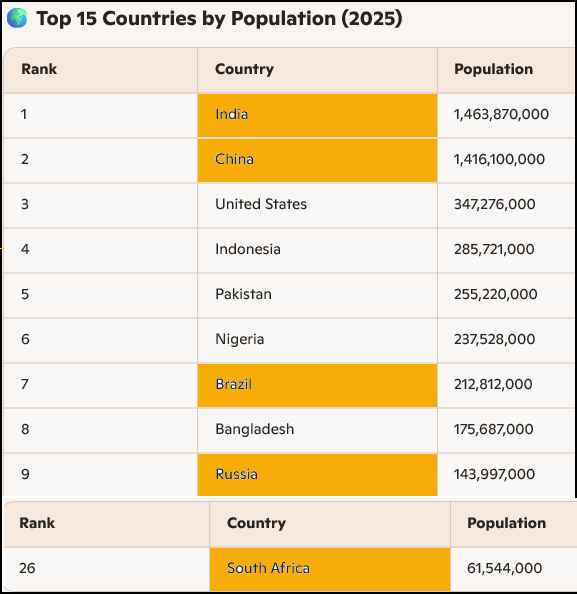
OBTW, the BRIC team all voted to return their partner Russia to the ICAO council.
China has masterfully positioned its international policies. The PRC exerts substantial influence across Africa, Asia, and South America through massive infrastructure investments and aggressive acquisition of strategic natural resources—especially minerals critical to clean energy and high-tech manufacturing. This AI created chart summarizes Beijing’s strengths in these regions, all of which portend to be markets of major growth.
These positions are not just loans or contracts, but the first steps into wide open commercial doors. Ehang, which some consider to be a poorly engineered eVTOL, has had first flights in Abu Dhabi, Brazil, Rumania, Rwanda, Saudi Arabia and Thailand, to name a few.
This Administration has initiated a bold, aggressive global trade policy. Expected gains may be substantial, but the negative impacts have been documented. THE BRICS TEAM SEEMS TO BE GAINING GREATER INTERNATIONAL INFLUENCE FROM THE BACKLASH OF THESE NEGOTIATIONS.
INDIA opens two key aviation links with CHINA and RUSSIA amid U.S. PRESSURE
October 28, 2025
On Oct. 27, IndiGo, India’s largest carrier, said it resumed service between Kolkata and Guangzhou, marking the REOPENING of a non-stop commercial air link to CHINA AFTER FIVE YEARS. IndiGo will restart flights between Delhi and Guangzhou on Nov. 10 and China Eastern will fly between Shanghai and Delhi on Nov. 9.
Entirely separately, on Oct. 28, Hindustan Aeronautics Limited (HAL) signed a memorandum of understanding with Russia’s United Aircraft Corporation to license domestic production for Indian carriers of the updated Russified Yakovlev SJ-100, the 95-seat regional jet formerly from its Sukhoi unit. The agreement marks THE FIRST TIME INDIA WILL PERFORM PRODUCTION OF A PASSENGER AIRCRAFT, according to Russian state media, which did not identify the scope of the work that would be completed in India. “Details of the joint work are being discussed only and will be known later,” the Russian corporation said in a report on Russian news agency TASS…
[NOTE: partial text]
